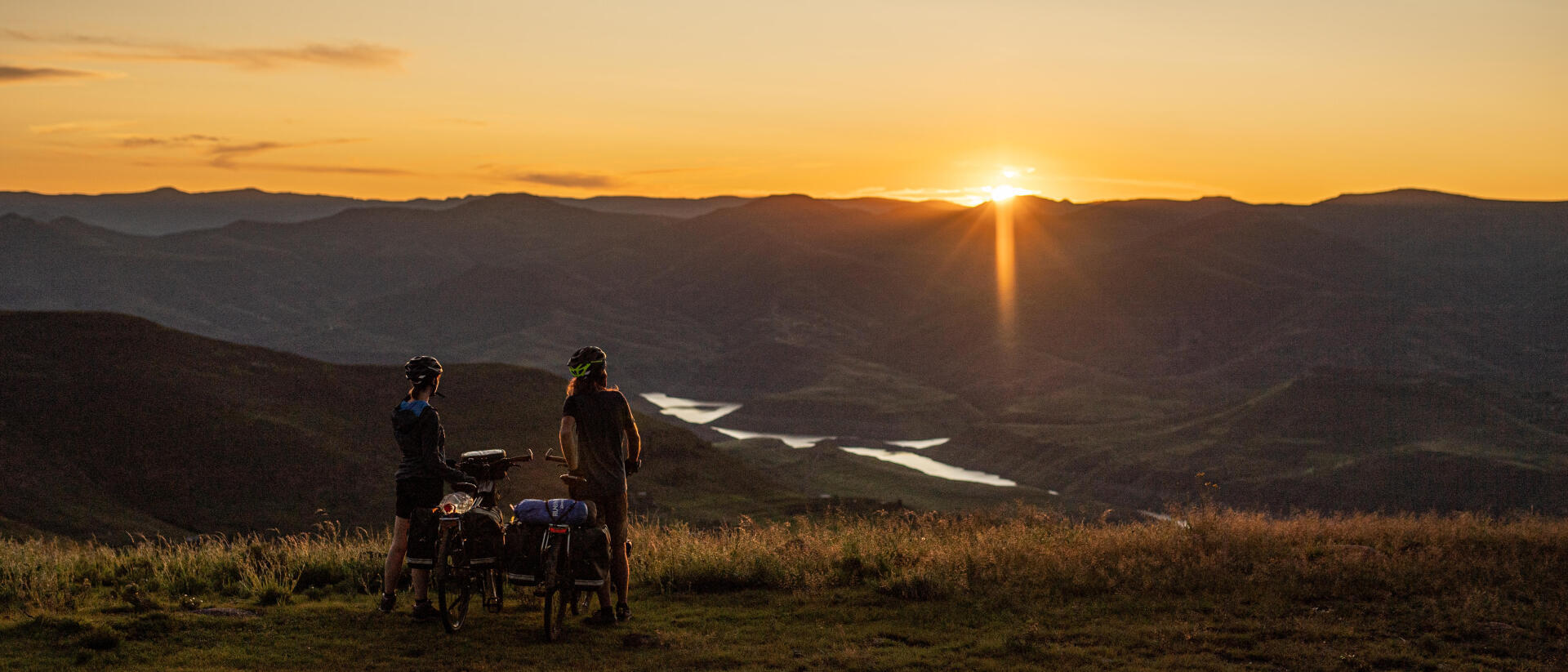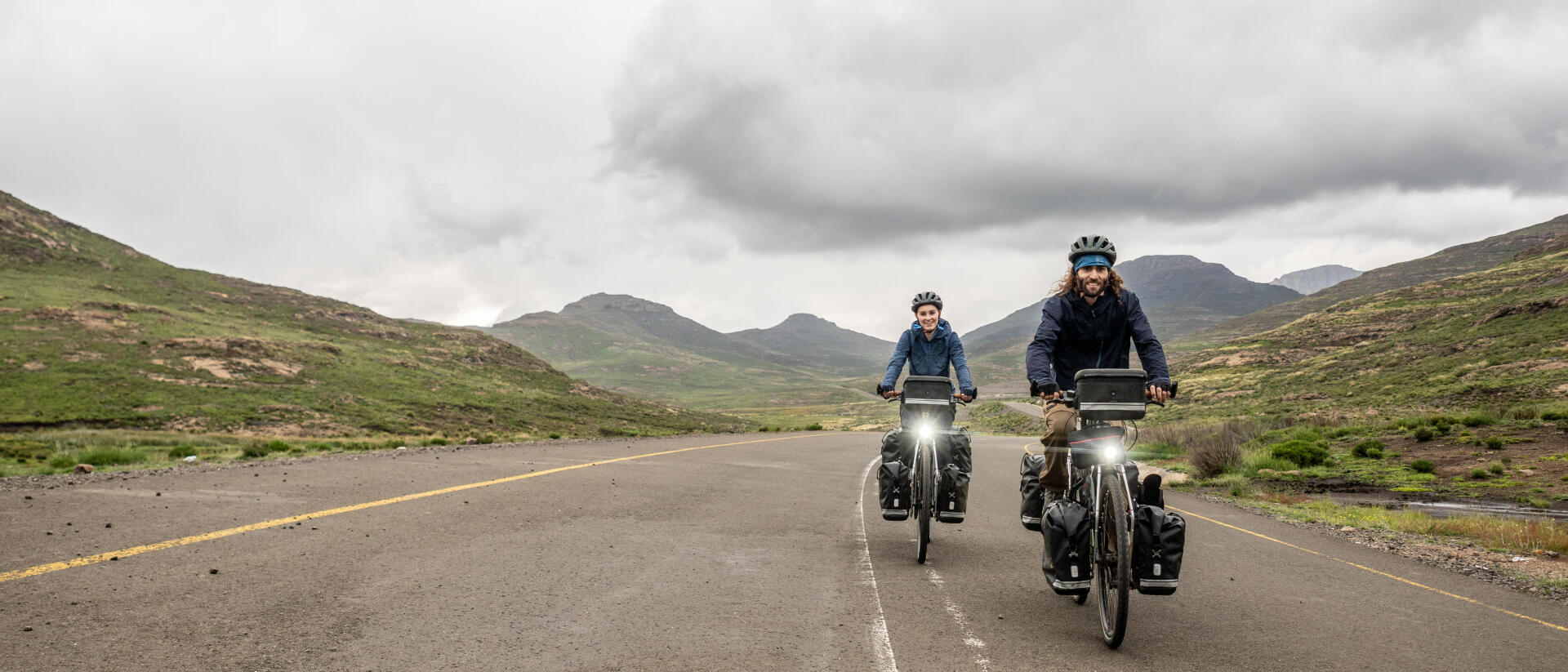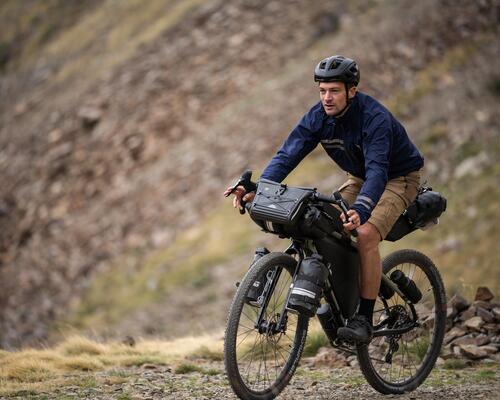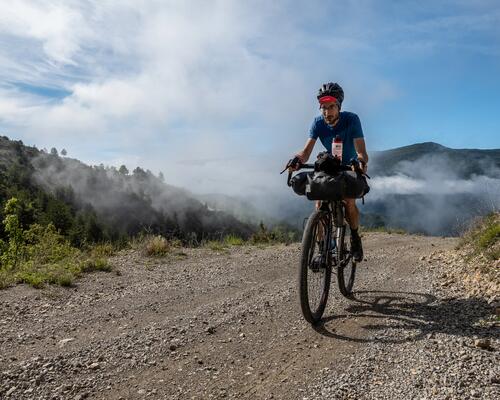Aside from being heavy, clothes can take up a lot of space. There's no point taking too many different outfits. Get back to basics and just remember to wash your underwear whenever you have the chance.
Cycling kit
It should be simple and practical, not get in the way of your pedalling, and protect you from the elements if necessary.
- 2 T-shirts or short-sleeved tops (to be worn as a base layer. Not cotton – go for merino wool, which dries quickly and reduces odours)
- 1 long-sleeved thermal top (it will serve as a second base layer)
- 1 pair of hiking shorts or cycling shorts (some people swear by their chamois pad. Others do without one with no problems. Each to their own, depending on how sensitive they are!)
- 2 sleeves (they keep your forearms warm and are easy to take off. Perfect for chilly mornings)
- 1 windproof, waterproof jacket (for effective, lasting protection from the rain, opt for a model with a waterproofing rating of 10 000 Schmerbers or more)
- 2 pairs of boxer shorts or technical underwear / 2 pairs of sports pants and bras
- 2 pairs of socks
- 1 buff or cap
- 1 pair of sunglasses
- 1 pair of cycling gloves (to protect your hands if you fall off)
- 1 helmet
- 1 neon jacket (a must in poor visibility and outside of built-up areas)
- 1 pair of shoes (with cleats, if you use clipless pedals. Avoid a road-style model with cleats that stick out too far as this makes it harder to walk. Otherwise, a pair of all-round trainers, such as trail running ones, will do the job).
In cold weather:
- 1 long-sleeved thermal top
- 1 down or fleece jacket
- 1 pair of tights or cycling tights
- 1 pair of overshoes
- 1 pair of long, warm gloves
Non-cycling clothing
It's all about being relaxed. It should keep you warm and be comfortable to sleep in.
- 1 cotton T-shirt
- 1 fleece
- 1 pair of hiking trousers
- 1 lightweight down jacket
- 2 pairs of pants
- 1 pair of socks
- 1 pair of flip-flops or sandals to let your feet enjoy a well-earned breather.
In cold weather:
- 1 set of thermal base layers
- 1 pair of long, warm socks
- 1 hat







